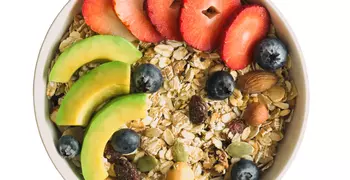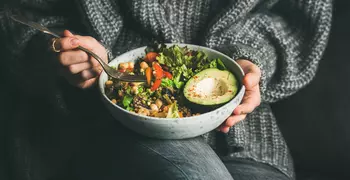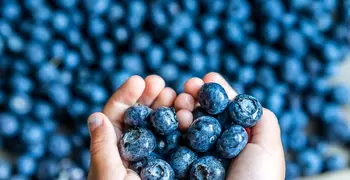Consider Food as Medicine

In many medical systems, such as Traditional Chinese Medicine, Ayurvedic Medicine, or Native American, food has always been an important way to treat illness and maintain health. Little by little more ‘traditional’ medical institutions and environments are recognizing the legitimacy and importance of these approaches.

An increasing number of studies provide evidence for the preventive or curative properties of certain foods, as well as the effects of utilizing food and diet as part of a comprehensive approach to health. For example:
- Garlic is often used in the U.S. for its ability to lower cholesterol and serum triglycerides.
- Green tea is a good source of antioxidants, which can protect cells, tissues, and cellular components from damage by so-called Reactive Oxygen Species.
- Some studies suggest that ginger may be an effective treatment for nausea.
There are many other plants that contain protective, disease-preventing compounds known as phytochemicals. Often, it is important to eat the whole plant, as the skin or outer hull contains nutrients and fiber that offer significant health benefits. Learn more about food as medicine.
Why eat whole foods?
Eating the whole plant, including the skin or outer hulls, can have many benefits.
✔Fiber is known to be beneficial for maintaining stable blood sugar levels and preventing insulin resistance, a major factor in obesity and type 2 diabetes.
✔Hulls found on grains, such as wheat and rice contain nutritional elements including vitamins.
✔The skins of certain fruits and vegetables contain antioxidants and cancer fighting nutrients.
The recommendation to include whole foods in the diet well prevent conditions such as osteoporosis that requires adequate supplies of vitamins and minerals in the proper balance, especially for women beginning in their early teens.
Eat from all food groups
Fruits and veggies: Include from 5 to 13 servings of a variety of fruits and vegetables daily. A serving is one piece of fruit, ½ cup of vegetables, 1 cup of salad greens, or ½ cup of juice (choose juices without added sugar or corn syrup).
Grains: Increase whole grains and limit refined grain products. When choosing grain products, be sure it says "whole grain" on the ingredients list. If it doesn't, it isn't whole grain.
Protein: Get a good mix of proteins, both animal (unless vegetarian) and plant. Eating a variety of proteins will ensure that you get all of the amino acids (building blocks of protein) you need.
Fats: Enjoy beneficial fats. Get the majority of your fats from plants and fish and minimize saturated animal fats.
http://nccam.nih.gov/health/garlic/ataglance.htm?nav=gsa#science
Palatty, P.L., Haniadka, R., Valder, B., Arora, R., Baliga, M.S. (2013). Ginger in the prevention of nausea and vomiting: a review. Critical Reviews in Food Science and Nutrition; 53(7), 659-69.
Ried, K., Toben, C., Fakler, P. (2013). Effect of garlic on serum lipids: an updated meta-analysis. Nutrition Reviews;71(5), 282-99.
















